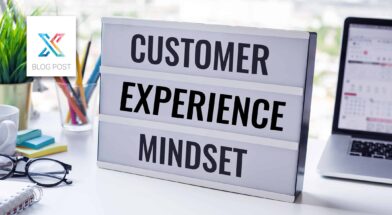In October’s blog, CX & EX: Vicious or Virtuous Cycle, I discussed the importance of being intentional about your firm’s client experience (CX) and employee experience (EX) efforts. Are you an engineering, architecture, construction, legal, accounting (fill in the blank here) firm? Does your company try to provide a positive CX OR are you a CX firm that happens to provide engineering, architecture, construction, legal, accounting (fill in the blank here)…services? Tony Hsieh, CEO of Zappos has a story that suggests, there is a difference in how your clients experience your CX efforts depending on where your firm puts its focus.
In his book, Delivering Happiness: A Path to Profits, Passion and Purpose, Tony Hsieh shares the story about one of his clients who wanted pizza late at night even though hotel room service was closed. Hsieh says he challenged his client to call Zappos customer service for his order even though the firm is a fashion retailer – and, thanks to Zappos customer service staff, pizza was delivered at 2:00 AM. According to Hsieh, “Zappos is a customer experience company that just happens to sell shoes.”
The CX Difference
Your clients experience that difference and that difference impacts the financial and cultural results you realize from your CX efforts. The reality for most firms is that they are trying to do more with less. Everyone in the firm is juggling multiple priorities while at the same time facing growing complexity in their day-to-day activity. Being the firm who demonstrates with every interaction to your clients that you will be there to support them and make their lives easier typically results in 10% - 15% increased revenue and upper quartile profits.
Are you shaking your head and saying, “But you just acknowledged that we’re trying to do more with less, how are we supposed to do what you suggest and still keep profits strong?”
I get it. And while what I suggest does take work, there are many strategies you can use to get started and that can be managed in bite-sized chunks. Plus, Client Savvy is here to help.
Three strategies …
Let’s dig deeper into how to design your firm’s culture around client experience. Let me share three quotes (and three strategies) that can help you be the firm your clients want to work with and refer their colleagues to as well.
“It’s easier to love a brand when the brand loves you back.” – Seth Godin
Do your clients feel the love in their interactions with you? Are you sure?
You’ve probably heard that the definition of client experience is the sum of all the interactions (feelings, emotions, perceptions) that a client has with a firm over the course of the relationship lifecycle. If you haven’t heard this before, write it down. This point is critical. We hear too often that firms are using the terms client service and client experience interchangeably. It’s an easy mistake to make, but inaccurate, nonetheless. Client service is only one aspect of the relationship. Consider this example:
A prospective client calls your office and the person who answers the phone is helpful and friendly. That’s great client service. Now, if over the course of your engagement with that client, your firm consistently keeps them up-to-date on the status of deliverables and is on-time (or early), that’s great client experience.
Process
Designing and implementing firm-wide processes that make your clients’ lives easier is the simplest way to ensure that your clients feel the love when they work with you. Sound daunting? It doesn’t have to be. More than anything else it really requires looking at the experience you deliver through a different lens. Here are two suggestions for getting started quickly.
- Schedule a team workshop to look at what it feels like (from your clients’ perspective) to work with your firm. Watch this 30-minute video (and share it with your team). Then bring together a group to see if there are areas within your firm’s service delivery process that might need to be adjusted. If you’re like most firms, you’ll say things like, “Wow, I never realized … could feel that way to a client.”
- Develop the mindset of always asking the question, “How will this (fill in the blank with whatever change you are considering making) impact our clients’ experience working with us?” Make this a standard question during strategic planning meetings. You care about your clients’ experience, but unless you intentionally ask the question, there can be unintended consequences of any change you make.
Inclusion
Since every person in your firm impacts your clients’ experience, when you gather your team to consider what it’s like, from your client’s perspective to work with your firm, include as many team member roles as possible (leadership, HR, administrative staff, senior management, junior staff, etc.). Each person will bring a different perspective on the way your clients might experience working with your firm. In any business decision, there will always be things ‘you don’t know you don’t know’ but you minimize this list by engaging different viewpoints.
“If you build a great experience, clients will tell each other about it. Word of mouth is very powerful.” – Jeff Bezos
We’ve all heard the statistics about unhappy clients – and they all have a negative impact on your bottom line.
- 89% are likely to do business with a competitor
- 48% are likely to tell (at least) 10 of their peers
- 68% are likely to leave your brand because of perceived, not necessarily even real, indifference by someone in your firm.
But what about the positive impacts of delivering an intentional experience to your existing clients? In addition to reversing (or eliminating) any of these negative impacts and increasing retention; there is strong financial incentive as your happy clients refer their peers to your firm.
Referrals
Dr. Robert Cialdini, author of the best-selling book Influence shares that social proof, or referrals, are a powerful element to create influence and trust in the minds of others.
When your clients tell their peers (who are likely friends and colleagues) that they have had a positive experience working with your firm, you automatically have some level of trust with these individuals.
That trust translates into positive revenue growth for your firm which generates higher revenue and ROI. Three reasons referrals deliver higher ROI:
- Typically already qualified leads – clients refer those who they know have similar challenges that you have already solved.
- Already aware of the benefits of working with your firm.
- The average lifetime value of 16% more than other clients (Wharton University)
Promoters
Ready to get started generating increased revenue from clients that enjoy doing business with your firm? Download our Activating a Promoter guide today.
“I think it’s very important to have a feedback loop…constantly thinking about what you’ve done and how you could be doing it better.” – Elon Musk
Consider your firm’s financial metrics. Would you take a snapshot of one moment in time and base your future planning on how well (or not) your firm was doing at that moment? Of course not. If you’re like most firms, you evaluate a variety of financial metrics on a monthly basis. It's important to ensure you are trending in the direction that will provide the financial success you desire.
With the reality that how your clients perceive the experience they have with your firm having such a powerful impact on retention and referrals, it is equally important to have an ongoing process for measuring that sentiment. Research has documented that:
- Firms in the top quartile of EX experience 10% higher client loyalty – Gallup
- Firms that excel at CX have 1.5 times more engaged employees (resulting in more engaged clients as well) – Tempkin Group
- High employee engagement can increase revenues by up to 2 ½ times that of firms with lower engagement – Hay Group/Korn Ferry
- Highly engaged teams show 21% greater profitability – Gallup
- Disengaged employees cost US companies up to $550 billion annually – The Engagement Institute
Getting Started
The significance of these metrics makes measurement of your firm’s efforts essential and just makes sense. Not sure if your firm is ready for an ongoing feedback program? Reach out to Client Savvy and get started with a one-time Client Perception Study
Every week I hear from clients they “learned something (through this process) from one of their most valued clients that they had no idea they were thinking.” Give your clients a voice and give your firm the opportunity to continuously evaluate your processes from your clients’ perspective.
Client Savvy has worked with more than 450 A/E/C firms in 16 years to design, implement, and measure their EX and CX initiatives. You understand the importance. We understand the process to integrate CX into your existing workflow processes. Email us at answers@clientsavvy.com to set up a complimentary 30-minute consultation.





